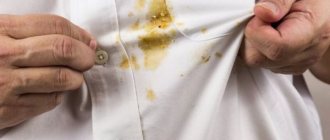Have you noticed that the walls of the greenhouse are covered with a thin layer of dirt and realized that it is time to act? Right. Dirt prevents precious sunlight from reaching the plants. To maximize the productivity and health of your greenhouse, it is important to not overlook cleaning it. But polycarbonate requires special care. After some research, here's what we learned about keeping a polycarbonate greenhouse clean. And the specialists of SafPlast LLC, a manufacturer of cellular and monolithic polycarbonate sheets, helped us understand some of the intricacies of care.
To begin with, it is useful to find out how polycarbonate greenhouses differ from glass ones and what are the nuances of care.
- How does a polycarbonate greenhouse differ from a glass greenhouse?
- Why you need to clean your greenhouse regularly
- How often should you wash the greenhouse?
- What to use to clean the greenhouse
- How to wash a greenhouse correctly
- When is it better to wash the greenhouse: in autumn or spring?
- What to do if polycarbonate becomes dull
How does a polycarbonate greenhouse differ from a glass greenhouse?
Polycarbonate is a special type of plastic. It is extremely durable and shatter-resistant—about 250 times stronger than glass.
Due to its cellular structure, cellular polycarbonate retains heat better than glass and retains heat in the greenhouse longer. And although cellular polycarbonate is produced up to 40 mm thick, the standard sheet thickness for a seasonal greenhouse is 4 mm.
High-quality polycarbonate with a concentrated UV protective layer lasts at least 10 years; in addition, due to its high strength, polycarbonate does not break (like glass), it is not easy to damage, and if damage occurs, polycarbonate does not shatter into fragments.
Besides all the benefits of ease of operation, polycarbonate sheets also provide better light diffusion than glass. This is a huge benefit as the plants inside will receive an equal amount of sunlight and maximize their growth potential.
Quality polycarbonate sheets also have a UV-resistant coating on one side, which protects both the plants and the longevity of the structure.
But polycarbonate can be scratched. Therefore, never wipe polycarbonate with a dry, hard cloth or the abrasive side of a sponge, as dust and dirt particles act like knives, damaging the surface over time.
If the greenhouse is very dirty, first rinse it under running water. Do not smear the dirt, it will scratch the surface
Where disinfection is necessary
Disinfection must be carried out in the following cases:
- in clinics, children's hospitals and similar institutions. In such cases, treatment is carried out after each dose;
- in kindergartens and other preschool institutions;
- in public places and crowded places, including train stations and airports, train carriages, airplanes, cinemas, dormitories and similar places;
- at food industry enterprises, as well as in places of food trade and general catering;
- at waterworks;
- in places where services are provided to the population, including beauty salons, bathhouses, gyms and swimming pools;
- in places where raw materials of animal origin are stored and processed.
Why you need to clean your greenhouse regularly
While a greenhouse provides an ideal environment to protect plants from harsh weather, it can also provide an ideal climate for unwanted pests. The tiny insects will thrive wherever you give them a chance, so they need to be controlled regularly. For example, midges will breed on organic debris. Pests and pathogens can live not only in plant material, but also on polycarbonate walls. Cleaning polycarbonate sheets thoroughly helps prevent the formation of algae and mold.
Even a little maintenance can go a long way in ensuring your plants thrive. Disinfecting your greenhouse gives your plants and the structure the best chance to thrive.
Why is processing needed?
Garden crops need moisture and heat created in the greenhouse. Unfortunately, the same characteristics are also important for various microorganisms that infect greenhouse plants with diseases, and the structure itself with mold and mildew. All this accumulates during the summer, reaching its maximum in the fall.
Autumn cleaning of the greenhouse is very important
It is very important to begin preparing the greenhouse for the season in the fall, when all the plants in the greenhouse have completed their fruiting cycle.
Terms and rules for processing polycarbonate greenhouses
What to do in the fall:
- fertilize and disinfect the soil;
- remove fungus and clean moldy areas in the room;
- remove, clean and repair the structure.
Infographics. What to do in the greenhouse in the fall
Each stage of the event should be considered separately and in detail.
How often should you wash the greenhouse?
Clean your greenhouse windows regularly to keep them from becoming dirty and blocking the light your plants need. Pay attention to any buildup or dirt on your windows and remove them as the season progresses.
Sweep the floor regularly and remove plant debris such as leaves and shoots after weeding.
Once a year, you should remove everything from the greenhouse and clean everything. Yes, this can be a difficult process if you have a large greenhouse, but it is worth it to ensure your plants thrive.
Take the time to thoroughly sanitize the greenhouse structure. As a rule, this is done in the fall, at the end of the season.
This will not only extend the life of your greenhouse and allow you to catch any problems before they become problems, but it will also provide your plants with a safe and healthy environment in which to grow.
Before cleaning the greenhouse, remove all plant debris. Finally, disinfect surfaces.
Stage 1. Cleaning
From the greenhouse you need to remove plant tops, weeds, supports, garters - all this should be burned to prevent subsequent infection of the planted plants.
All plant remains must be removed from the greenhouse.
Material that cannot be burned must be treated with an antifungal drug - potassium permanganate or phytosporin. The equipment is soaked for 30 minutes in the solution, after which it is thoroughly washed, dried and stored in a dry place until spring.
Cleaning up debris within the greenhouse
In order to provide the greenhouse with the most optimal soil composition, you should know what components should be included in its composition.
Table. What components should be included in greenhouse soil?
| Components | Density (g/cm3) | Porosity (% by volume) | Lowest moisture capacity (% of volume) | Total moisture capacity (% of volume) | Cation exchange capacity (mg-eq/100 g) |
| Organic | |||||
| Humus | 0,4-0,7 | 65-80 | 60-70 | 300-400 | 200-250 |
| Lowland peat | 0,1-0,3 | 80-90 | 75-85 | 350-1000 | 150-200 |
| High peat | 0,05-0,1 | 80-96 | 70-80 | 800-1500 | 100-120 |
| Hydrolytic lignin | 0,18-0,2 | 80-90 | 70-80 | 400-500 | 100-150 |
| Vermicompost | 0,3-0,5 | 70-85 | 65-75 | 300-450 | 200-250 |
| Sawdust | 0,2-0,3 | 80-90 | 50-60 | 400-450 | 100-120 |
| Bark of tree | 0,3-0,4 | 70-85 | 40-45 | 100-150 | 100-120 |
| Straw | 0,1-0,2 | 85-95 | — | 200-300 | — |
| Mineral | |||||
| Humus horizons | 1-1,4 | 40-65 | 20-35 | 28-65 | 10-70 |
| Perlite | 0,25 | 90 | 50 | 360 | — |
| Sand | 1,6 | 34 | 5 | 23 | 1-3 |
| Expanded clay | 0,6 | 80 | 25 | 130 | — |
| Vermiculite | 0,2 | 90 | 65 | 450 | 100-150 |
| Zeolite | 1 | 60 | 40 | 60 | 50-130 |
What to use to clean the greenhouse
Is it possible to wash the greenhouse with: laundry soap, fairy soap, white soap, green soap? Cleaning the polycarbonate walls of your greenhouse does not require any fancy solutions. In fact, the easiest and safest way to wash them is to use a mild soap, such as dishwashing liquid, that does not contain abrasives or solvents/strong alkalis. This is what the professionals and our expert recommend since most other household cleaners contain at least one chemical that can damage the coating on your polycarbonate panels.
Also make sure you use a non-abrasive sponge to avoid damaging the polycarbonate.
If you have a wood frame, you'll want to treat it too. Use a non-toxic, plant-based horticultural oil to treat wood frames. Metal frames can simply be wiped down with your chosen disinfectant.
Stage 2. Disinfection
There are several methods for disinfecting a polycarbonate greenhouse.
Effective methods for disinfecting a greenhouse
It is quite dangerous to introduce aggressive chemicals (such as chlorine or vitriol) that can damage the soil and future harvest. That is why experienced gardeners advise that during seasonal cleaning of the greenhouse structure, remove about 7 cm of soil and take it outside. This makes it possible to remove areas of land that are most populated by pests, weed seeds, larvae, and harmful bacteria. Replenishment of the soil occurs due to dry humus, leaves, sand, manure, herbs, ash and peat.
Replacing topsoil
Peat prices
peat
Autumn work in the greenhouse
Fertilizers and soil from last year are carefully dug up. The prepared soil is covered with fresh straw.
The soil in the greenhouse is dug up
Autumn digging of soil in a greenhouse
Important! If the technical features of the greenhouse allow, it is better to remove the covering. This will allow beneficial microbes to overwinter in the soil. This approach allows you to avoid depletion of the layer in which the maximum useful elements are located.
It is not always possible to remove the top layer of soil or, alternatively, this does not give the desired result. Therefore, it is necessary to treat the soil with a solution of iron sulfate.
inkstone
Prices for iron sulfate
inkstone
To prepare the solution you need:
- water;
- 250 g of vitriol;
- bucket.
The chemical is dissolved in 10 liters, after which the solution is sprayed on the ground.
Need to know! You should treat the soil with chemicals only in the fall, since doing it in the spring can harm the plants.
Video - Autumn treatment of a greenhouse without replacing the soil
If possible, you should return to the greenhouse in winter. After the first snowfall, you should throw snow there. In spring, this provides the soil with melt water.
After the first heavy snowfall, you need to throw snow into the greenhouse (20-30 cm layer)
How to wash a greenhouse correctly
Mix a few drops of soap with a bucket of water. Use a soft sponge to gently wash the inside of the polycarbonate sheets to remove any accumulated dirt. Rinse the walls with a hose and blot with a soft towel to avoid water marks.
It is necessary to avoid possible particles of sand and dust getting on the sponge; they can scratch the surface of the sheet. Why is it important not to use abrasive sponges, solvents, etc.? High-quality sheets of cellular polycarbonate are coated with a UV protective layer, which provides protection for the sheets when exposed to sunlight. Abrasives can damage the layer, which means the sheet in this place will become dull, turn yellow and collapse.
As for the outside of the sheets, simply rinse them with a hose. If you notice that the panels are still dirty, use a cleaning solution and sponge on them.
Stage 5. Strengthening the frame
Even the best polycarbonate greenhouses can collapse under the weight of snow. In winter, the load on structures can suddenly exceed the planned value. To avoid these troubles, you should install additional supports for the frame.
Sometimes greenhouse manufacturers offer to purchase additional arcs, but you can do it much simpler - make your own wooden supports in the shape of the letter “T”. Such structures support the upper part of the greenhouses. A fortified structure can be left for the winter without fear that its roof will collapse.
Preparing the greenhouse for winter by strengthening the frame with supports
About 4 supports are used per room (if the length of the greenhouse does not exceed 6 meters). However, if the greenhouse is located in an area where too much snow accumulates, their number should be doubled.
Strengthening the greenhouse frame before winter
To prevent the supports from getting stuck in the ground, they need to be placed on a hard surface.
Another option for reinforcing supports for a polycarbonate greenhouse
To reduce the likelihood of snow accumulating on the roof and walls of the greenhouse, in late autumn it is worth opening the doors and windows of the room. This can achieve two goals at once. Firstly, the frost will destroy the remaining pests from disinfection. Secondly, the same temperature inside and outside the room makes it possible to avoid the formation of ice. In this case, layers of snow will not be able to linger on the surfaces, sliding off them.
Important! Even the most expensive and high-quality greenhouses with reinforced structures may not withstand heavy snowfalls. For this reason, surfaces should be regularly cleared of snow.
Cleaning the greenhouse roof from snow
What to do if polycarbonate becomes dull
If it becomes dull from dust, wash it. But most often, dullness is caused by destruction under the influence of UV. The leaf first fades, then turns yellow, then cracks, holes, etc. appear. The light transmission of the leaf decreases, it is no longer suitable for planting.
Fading can be avoided if you buy a quality sheet with a UV protective layer. Unfortunately, not all manufacturers apply UV protection of the required thickness and concentration. To be sure of the durability of the selected polycarbonate, ask the seller for a document confirming the manufacturer’s financial responsibility for the quality of the sheets. Thus, the SafPlast plant bears financial responsibility for cellular polycarbonate of the Novattro, Actual!Bio, Rational brands in accordance with the Declaration of Quality Guarantee. Remember that choosing the right polycarbonate is the key to the longevity of your greenhouse.
We thank SafPlast LLC for assistance in writing the article.
Soil preparation
The greenhouse creates ideal conditions not only for the growth of plants (including weeds), but also for various pests that can ruin the standing crop if they are not dealt with. Treatment of the greenhouse in the fall against pests and diseases should be comprehensive. The use of chemicals - various insecticides during the growing season is not a very good idea. Chemicals that accumulate in plants eventually enter our bodies.
Therefore, special attention should be paid to disinfection and other soil treatment in the greenhouse in the fall.
Soil replacement
This is a rather labor-intensive and expensive process, but after it the number of pests is reduced by several orders of magnitude. It is recommended to carry out such a procedure as preparing the soil in a greenhouse in the fall, with a complete replacement of the fertile layer, at least once every three years. The soil is removed to a depth of 7-10 cm. Then peat, humus (manure), sand and ash are added in its place, the proportions vary depending on the presence of a particular ingredient, but rarely exceed 1 bucket per 1 m2 of soil. Tilling the soil in a greenhouse in the fall may include fluffing, for heavy and oily soils, using sawdust. However, with this method you need to be careful and, if possible, not use sawdust from coniferous wood (spruce, pine, larch) and wood species with a large amount of tannins (oak, walnut).
The resulting mixture is dug up. Distribute evenly over planting areas and cover with a thick layer of straw or fallen leaves on top. After snow falls in winter, you need to throw some of it into the greenhouse yourself with a shovel (a layer of 15-20 cm) to prevent deep freezing of the soil and provide the ground with the necessary moisture in the spring. Some gardeners additionally water the enriched soil mixture with a weak solution of potassium permanganate before adding fertilizers.
A thick layer of fallen leaves will help keep you warm
Soil infected with pests and diseases does not need to be thrown away, but rather treated. How to treat the soil in a greenhouse in the fall in order to effectively disinfect it without resorting to strong chemicals. To do this, a pile is formed with an area of 1-2 m2 and a layer thickness of 20 cm. When constructing it, each layer is generously sprinkled with lime at the rate of 250 g per 1 m2. It remains in this state for the entire next year, having frozen out over the winter, the pile will need to be dug up again next fall and used after the second winter.
Soil fertilization
How to fertilize the soil in a greenhouse in the fall depends not only on the type of soil, but also what crops are planned to be planted in the spring. To achieve the highest yield, not only special means are used, but also special methods for processing perennial plants:
- Strawberry. After the last harvest, at the end of August, all the greens are mowed down so that the top buds remain intact. The bed is watered abundantly and the soil is loosened. Potash and superphosphate fertilizers are applied in the proportions recommended by the manufacturer. All this is sprinkled with a small layer of fertile soil so that the new shoots do not dry out. Before the onset of cold weather, no later than October, the strawberry roots are earthed up and covered with peat. In winter, be sure to pretend to be a thick layer of snow to prevent freezing.
- Tomatoes. One of the most common greenhouse crops. They are very demanding on the quality of the soil and the composition of fertilizers. For tomatoes, soil preparation in a greenhouse in the fall consists of applying organic, chemical or combined fertilizers, which must necessarily contain:
- Manganese – promotes faster ripening of fruits;
- Copper, boron – stimulate flowering and abundant fruiting;
- Potassium, magnesium, phosphorus, nitrogen - contribute to the rapid growth of the plant.
- Cucumbers. The most common “resident” of greenhouses. There are many varieties designed for growing in greenhouses. However, processing a polycarbonate greenhouse in the fall to plant cucumbers in it has its own specifics. First of all, you need to check the acidity of the soil. If the acidity is more than 6.5-7 pH in the fall, it is necessary to lim the soil. Also in the fall, the soil is fertilized with the following specialized mixture:
- Potassium salt – 10-25 g;
- Ammonium sulfate – 10-25g;
- Ammonium nitrate up to 25 g.
Important! There is a very simple way to test soil acidity at home. You need to pour a handful of dry soil with simple 9% table vinegar
If a reaction begins with the release of gas, then there is enough lime in the soil and it is neutral.
Determination of soil acidity using 9% vinegar, reaction to neutral soil
Thermal method
It involves pouring hot water onto the greenhouse soil.
- It is advisable to dig it up first for deeper penetration of boiling water.
- Usually they are shed at least 3 times, after which the entire watered surface is covered with film to maintain the elevated temperature for a longer period of time.
The method is simple, but it is difficult to determine whether it brings more benefit or harm. Indeed, under the influence of high temperatures, the beneficial microflora is almost completely destroyed. I think this technique is more appropriate for small areas.
Cleaner composition
Copper-based preparations are commonly used in gardening. A preparation based on copper sulfate can also be used for processing.
You can also use hydrogen peroxide (37%), you will need to purchase a canister. Perhydrol is diluted in a ratio of 1:10. It can be used for metal processing. It has a bactericidal effect and removes rust.
Hydrogen fluoride glass cleaners are very powerful and also produce fumes. The released substances are poisonous to humans and harm crops. Therefore, it is important to thoroughly ventilate the greenhouse after using hydrogen fluoride.
Winter crops in autumn
Despite intensive preparations for winter, in the fall you can also take care of the future harvest. You can set aside a small corner in the greenhouse for planting sorrel or wild garlic. This place should be insulated with leaves or spruce branches more thoroughly, and after the first snow falls, throw a small snowdrift up to 1 m high on the bed. Already in early March, when the snow melts in the greenhouse, you will be able to see the first shoots, and harvest in April.
Planting winter crops in autumn











